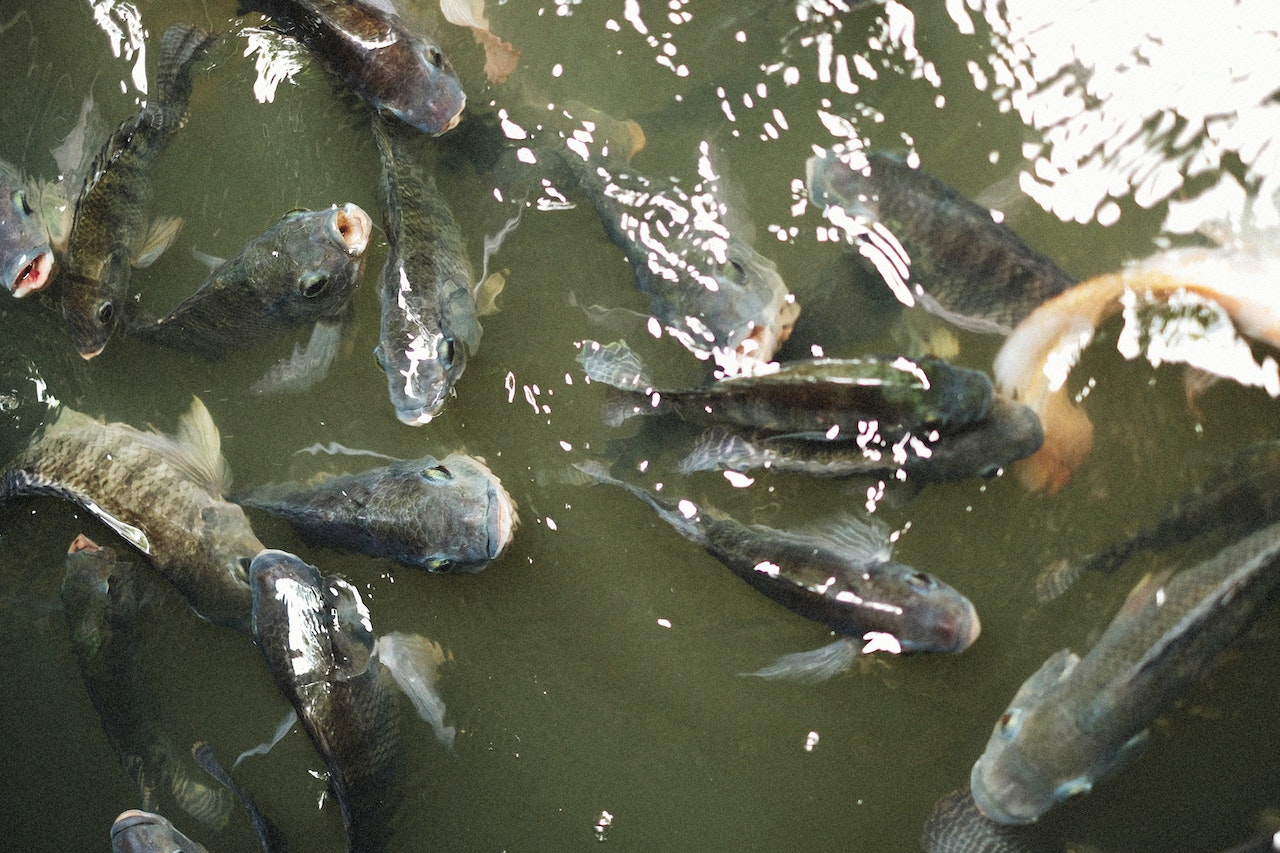Aquaculture is becoming very popular amongst Zambians because it provides people with employment and a cheaper source of protein. The government, through the Ministry of Fisheries and Livestock, supported by other line ministries such as the Ministry of Small and Medium Enterprises, the Ministry of Commerce, Trade and Industry, and local government, are encouraging citizens to venture into fish farming.
Fish farming is a form of aquaculture specific to the growing of fish for business purposes. It is an industry on the rise, one that will play a pivotal role in scaling up nutrition for the local communities. To successfully raise fish in ponds, cages, tanks or raceways, there is a need to conduct a checklist.

Novatek Tilapia feed range. All our tilapia feeds are fortified with natural phytogenic compounds, adding functional- and health benefits to Tilapia farming.
Mostly in the Zambian scenario, fish farming is conducted in ponds and cages and placements of fingerlings occurs between August and April. This is due to the weather pattern. Between June to August, water temperatures drop to below 20 °C inhibiting growth as a result of the fish’s inability to consume enough feed. Once summer comes, fish farming activities restart, and it is then important to observe the following:
- Check the status of the production system
Before you begin your fish farming cycle, ensure that you inspect your production facility very well. In ponds, ensure that the dykes, drainpipes, and liner (if it is lined) are without holes and all sieves are present. In cages; check all your fish nets and ensure they are without holes. For those using tanks, make sure all the aeration and filtration systems are working properly. Take time to observe your production systems before stocking, rather than doing amendments midway through the cycle. It will save you money. - Lime the ponds
Liming is important for disinfection. Ponds are usually limed to kill off pathogens that might have remained from the previous cycle. For newer ponds, it is not necessary to lime unless the pH of the soil is acidic. - Filling the water
Begin filling in the water once you have checked for punctures or holes. Failure to spot the holes in your production system will lead to water loss in ponds and fingerling escapees in cages. - Fertilizing
Fertilizing helps with enriching the water to be able to produce natural food called plankton. Manure is commonly used as fertilizer. There is a misconception that manure is used as feed in fish farming. It is not! Manure is a catalyst for the growth of plankton in water which fish will eat. Plankton is natural food found in water that is made up of two components; zoo-plankton, which are minute animal-like organisms and phytoplankton, plant-like organisms. So, the concept of fertilisation is to enhance growth of natural food which provides extra nutrition to the newly introduced fingerlings. Do not feed manure, feed Novatek Fish Feeds. - Acquire seed/fingerlings
A good seed source is essential in fish farming. Always get fingerlings from a reputable fingerling supplier. There are a number of suppliers in Zambia that provide quality fingerlings. You can consult Novatek should you be looking for one. Another important point to emember is to understand the species allowed in your area. Certain species are not allowed for farming in certain limnological systems. For example, Oreochromis niloticus is not allowed in the Northern Region of Zambia and only allowed in the Southern Region that includes Lake Kariba. Visit or consult the Fisheries Officers in your area. - Acquire feed
Fish feed makes up more than 50% of the total production expenses. It is therefore important to pick the right feed that will in turn offer you better harvesting weights and profitability. Ensure you choose Novatek Fish Feeds today. At Novatek, we have a wide variety of fish feeds from fry stage to harvesting size; Prestarter to Grower and Finisher or Pond 18% for those in pond culture. Our fish feeds are affordable, of the highest quality and found country-wide at our many agents and Zambeef Macros. - Testing kits
A good fish farmer will always diligently monitor the water quality daily. Water quality parameter checks provide essential information about the environment the fish is growing in. Parameters such as temperature, dissolved oxygen, pH, and ammonia need to be observed constantly as an imbalance may result in fatalities in the production systems. Changes in temperature may lead to fish not eating or reduce the oxygen level in the water causing an anoxic environment, in which the fish will die. Increase in ammonia concentration will also kill fish. With a water quality testing kit, you will be able to measure the changes in these parameters. - Observe market
All business decisions should be related to the market around you. Fish is popular in Zambia and currently, the country has a deficit. However, it is important to define your market before you start your business. Once you know your market, it will help you to plan the target weight you will grow your fish. Most table-size fish in Zambia is grown to an average of 350 g but your market may require smaller or bigger fish. Your market will define the size. Listen to your market through your market research.
At Novatek Animal Feeds Zambia, we have all your fish feeds and the expertise required to help you through your fish farming experience. We have quality affordable fish feeds, found throughout Zambia and other countries in East, Central and Southern Africa. We also recently appointed Everett Pieterse as a Fish Nutritionist to add to our body of Aquaculture Experts. Reach out to us today on +260-971-252-522 or visit www.novatekfeeds.com.










Morning,do you produce feed for cat fish? Do you sell fish tanks for fish productio?
Hi – for more information contact – Everett Pieterse on +260-971-252-522 or visit http://www.novatekfeeds.com.